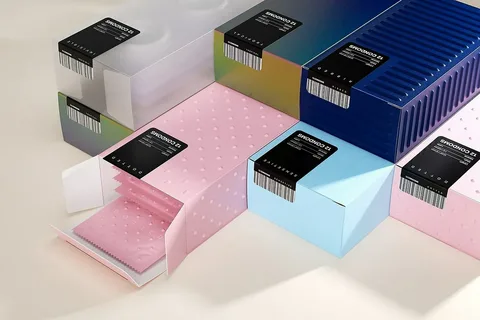In 2025, packaging design is more than just a protective layer; it’s a powerful tool for brand storytelling, consumer engagement, and sustainability. As the market becomes increasingly competitive, brands must innovate to capture attention and foster loyalty. Here are the top 10 packaging design trends shaping the industry this year:
Sustainable and Eco-Friendly Materials
With growing environmental concerns, consumers and brands alike are prioritizing sustainability. Materials such as biodegradable plastics, recycled paper, and plant-based inks are gaining popularity. Brands are also adopting minimalist packaging to reduce waste, aligning with the global push towards a circular economy.
Minimalist and Clean Designs
Simplicity continues to reign in 2025. Minimalist packaging, characterized by clean lines, neutral colors, and functional elements, conveys sophistication and allows the product to shine. This approach not only appeals to modern aesthetics but also enhances readability and user experience.
Smart Packaging with QR Codes and NFC
Technology integration is transforming packaging into an interactive experience. Smart packaging features like QR codes and Near Field Communication (NFC) tags enable consumers to access product information, tutorials, and even augmented reality experiences. This trend enhances transparency and fosters deeper brand connections.
Retro and Nostalgic Elements
Nostalgia is a powerful emotional trigger. In 2025, brands are revisiting design elements from the ’70s, ’80s, and ’90s, incorporating vintage typography, muted color palettes, and hand-drawn illustrations. This retro-modern fusion appeals to both older generations and younger consumers seeking authenticity.
Bold and Playful Typography
Typography is taking center stage in packaging design. Oversized fonts, handwritten styles, and 3D lettering are being used to convey personality and make a statement. This trend is particularly prevalent in the food and beverage industry, where brands aim to stand out on crowded shelves.
Nature-Inspired Palettes and Textures
Consumers are gravitating towards designs that evoke a sense of nature and wellness. Packaging featuring earthy tones, organic textures, and botanical illustrations not only aligns with sustainability but also appeals to health-conscious consumers. This trend is especially prominent in the beauty and organic food sectors.
Sculptural and Unconventional Shapes
Packaging is evolving into an art form. Brands are experimenting with asymmetrical designs, embossed textures, and sculptural forms to create a memorable unboxing experience. These unique shapes not only capture attention but also enhance the tactile experience, making the product more memorable.
Interactive and Storytelling Elements
Consumers seek more than just a product; they desire an experience. Packaging that incorporates interactive elements, such as pop-ups, hidden messages, or augmented reality features, transforms the unboxing process into a storytelling journey. This trend fosters emotional connections and brand loyalty.
Limited Edition and Collaborative Designs
Exclusivity drives demand. Brands are collaborating with artists and designers to produce limited edition packaging that tells a unique story. These special releases not only differentiate products but also create a sense of urgency and excitement among consumers.
Enhanced Unboxing Experiences
The unboxing experience has become a crucial touchpoint in consumer engagement. Brands are focusing on creating a premium unboxing experience through magnetic closures, custom inserts, and luxurious wrapping materials. These thoughtful details elevate the perceived value of the product and encourage social sharing.
Conclusion
In 2025, packaging design is not just about aesthetics; it’s a strategic tool that influences consumer perceptions, enhances brand identity, and drives purchasing decisions. By embracing these top 10 trends, brands can stay ahead of the curve, foster deeper connections with their audience, and contribute positively to the environment. As the industry continues to evolve, staying informed and adaptable will be key to sustained success.

Leave a Reply